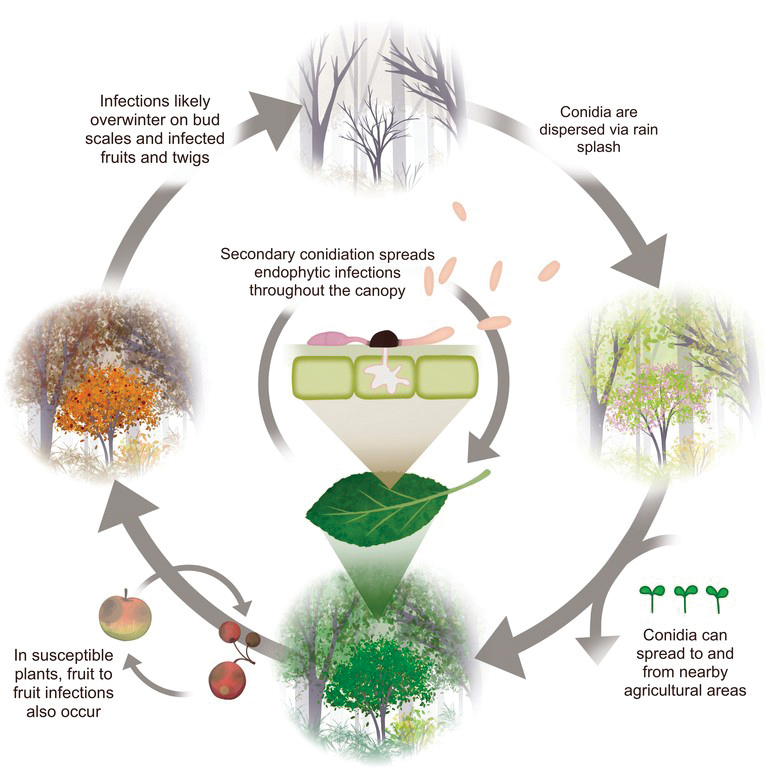Posted: April 19, 2021
Searching for the source of bitter rot disease
Fungal spores responsible for bitter rot disease, a common and devastating infection in fruit, do not encounter their host plants by chance. Turns out, they have a symbiotic association with the plant, often living inside its leaves.
The new way of looking at the fungal pathogen Colletotrichum fioriniae as a leaf endophyte--bacterial or fungal microorganisms that colonize healthy plant tissue--was the outcome of a two-year study conducted by researchers in the college.
The research focused on apples and involved the placement of rain-splash spore traps in orchards. Traps were also placed in two forested areas, composed mostly of deciduous trees, near the orchards.
The team tested more than 1,000 leaves of apple and 24 forest plant species. They found Colletotrichum fioriniae in over 30 percent of leaves sampled, with most spores coming from the forest samples.
In orchards that were managed with fungicides, up to 8 percent of apple leaves were infected with the fungus. In the untreated orchard, the spores were abundant, meaning they were found in 15 to 80 percent of the leaves. However, the infections did not seem to be causing any leaf diseases.
"While unexpected, these findings did explain why growers struggle with bitter rot even when they remove all diseased fruits and twigs--the fungus was living in the leaves during the season," said Phillip Martin, a doctoral candidate in plant pathology. "The fungus was present in all the tested orchards and could not be traced to infection from a nursery, which makes sense since the initial infections are likely coming from surrounding forests and fencerows."
Future research is aimed at developing better management techniques, such as selecting resistant cultivars and breeding for genetic resistance.
--Amy Duke
Features
Breaking the Silence on Farm Stress
Farming has always been a demanding profession, but today's farmers face unprecedented pressures that can severely impact their mental health.
Biting Back
Research Targets Vector-Borne Diseases to Save Lives
Leading Forward
Ott brings deep connection to role of dean.



